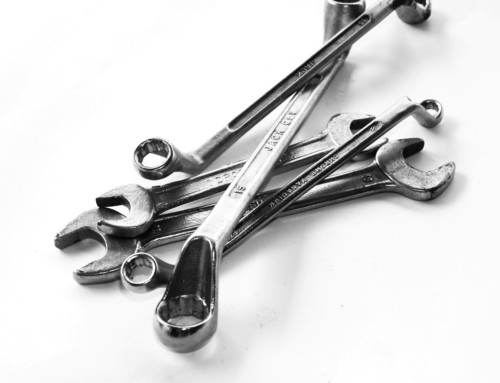What Processes are Required to Make Your Storeroom Run Smoothly
 If you have invested the time to layout the storeroom correctly, and gather the right data, you are on the right track to a successful storeroom. However, if you don’t take the time to map the various processes in the storeroom, and hold staff to those processes, the work is done so far will be a waste.
If you have invested the time to layout the storeroom correctly, and gather the right data, you are on the right track to a successful storeroom. However, if you don’t take the time to map the various processes in the storeroom, and hold staff to those processes, the work is done so far will be a waste.
When processes are mapped and responsibilities defined, the staff know who does what when. This eliminates unnecessary communication and work, enabling more time to do what is required. In addition, when all activities are repeated in a consistent way, it allows organizations to evaluate the process and determine better ways of working.
There is more than just a single process in the storeroom. While there may be a main process, there are many sub-processes which must be defined as well.
New Part Process
The new part process is absolutely critical to managing what goes into the storeroom at the what quantities. This process was covered heavily in the previous post The Spare Parts Stocking Strategy. The process will not be reviewed again here, but it is vital that this process is defined, along with a governance process to ensure all materials follow the required process and data standards.
Purchasing Process
Once the spare parts have been set up in the CMMS, the purchasing process comes next. During this process, there are many activities involved;
- Quoting – Asking suppliers to submit the price, lead time and any warranties for the required parts or services
- Quote evaluation – Evaluating the quotes not based exclusively on price. Each quote should be evaluated based on price, lead time, warranty, past supplier performance and any other value added services provided by the supplier.
- Placing the order – This is the actual issuing the PO to the supplier who was awarded the business.
- Invoice Management – Managing invoices is vital to ensuring the supplier is paid on time. Nothing is worse that having a supplier re-submit an invoice after the payment due date has passed.
- Payment – Ensuring prompt payment will enable the supplier to give you the best possible terms, and possibly a discount.
- Supplier Management / Evaluation – All suppliers need to be measured against defined criteria. This allows organizations to determine who should become a strategic partner, furthering savings and improving service.
Each one of these activities should be documented with defined criteria and procedures to complete each one, regardless of who is doing the work.
Receiving Process
Once a supplier delivers the spare parts to the site, it is important to ensure those spare parts are quickly assessed, receipted and stocked. Often times, spare parts will sit on a receiving dock for days, and when they are finally unpacked, the damage is found, but it is too late to file the claim. Having a robust receiving process will reduce wasted effort in the storeroom. A receiving process should have;
- Initial Inspections – This is the initial incoming inspection of all deliveries to ensure there is no visible damage to the packages. If any damage is visible, it should be noted on the Bill of Lading and the vendor notified.
- Secured Storage – Sometimes materials are received and not put away immediately. While this should be avoided, there are times is can not be. In case it can’t, there should be a defined and secure location to keep the materials safe until they can be put away.
- Detailed Inspection – As materials are removed from their shipping containers and put away into to the stock bins or kitting bins, they should be inspected, verifying their part numbers, and looking for damage.
- Storage – Once materials are inspected, they should be stored in their original packaging to prevent contamination. They should also be tagged with the date received, so the stock can be managed on a First In, First Out (FIFO) process.
- Goods Receipting – Once everything has been inspected and quantities verified, the materials need to be goods receipt or goods received. This will then trigger the payment process to proceed.
Kitting Process
The one storeroom process that many organization fails to develop is the kitting process. This process reduces the non-value added time that the technicians spend looking for materials and traveling to and from the storeroom. This process includes a few key steps;
- Setup the Job Bin – The job bin is usually created when the job is released from the planning group to the storeroom. this may be a weekly report, or as part of the workflow built into the CMMS.
- Pull Material – The storeroom will pull material from stock, or special order the materials as needed. As they arrive, the materials are added to the job bin and the picklist checked off.
- Release the Job Bin – Once and only once that all of the materials are present can the job bin be released. Usually, a green flag is added to the bin to indicate that it is ready.
Once the parts are released from the storeroom, they need to be issued.
Issuing Process
The issuing process is what allows the organization to assign the cost of the parts to the equipment and operating department. While the issuing process is quite simple; all parts must be signed out, there are a few basic principles that must be followed;
- All parts must be issued to a specific work order. No issuing to generic or blanket work orders
- All parts must be signed out as they leave the storeroom.
Returns Process
The returns process is often overlooked. Many organizations will simply take the parts and return them to stock as if they were new. This leads to potentially having defective parts in inventory. When setting up a returns process ensure that;
- There is a designated location where parts being returned are segregated from regular
- Ensure there is a formal testing policy for parts being returned. They must be tested and validated prior being returned to stock.
By following these basic principles, your organization can be assured that the materials in the storeroom are always in good condition.
Performance Management Process
What gets measured, gets done. This holds true in the storeroom and is why a performance management process is required. This ensures that not only is the storeroom meeting the needs of the business, but that the storeroom processes are operating correctly. When deciding what to measure, an organization should;
- Identify leading indicators so the issues can be identified before they become an issue
- Use the Plan Do Check Act cycle for any improvements made in the process
- Be sure to select KPIs that are measured frequently enough to provide a chance to correct the issue(s) before it is too late.
I hope this has provided some insights into the operation inside a storeroom. While not extensive, it should provide some awareness of what should be happening inside a storeroom and how spare parts are managed. In the next two weeks, I will be covering;
- Storeroom Optimization
- Assessing Your Storeroom
In closing, I must ask, do you have your processes mapped? Do they outline who does what, when? Do they indicate the required level or performance or quality that the process must be done to?
If you have any requests or specific issues you would like addressed in this series, please let me know at [email protected]
Remember, to find success, you must first solve the problem, then achieve the implementation of the solution, and finally sustain winning results.
I’m James Kovacevic
Eruditio, LLC
Where Education Meets Application
Follow @EruditioLLC

